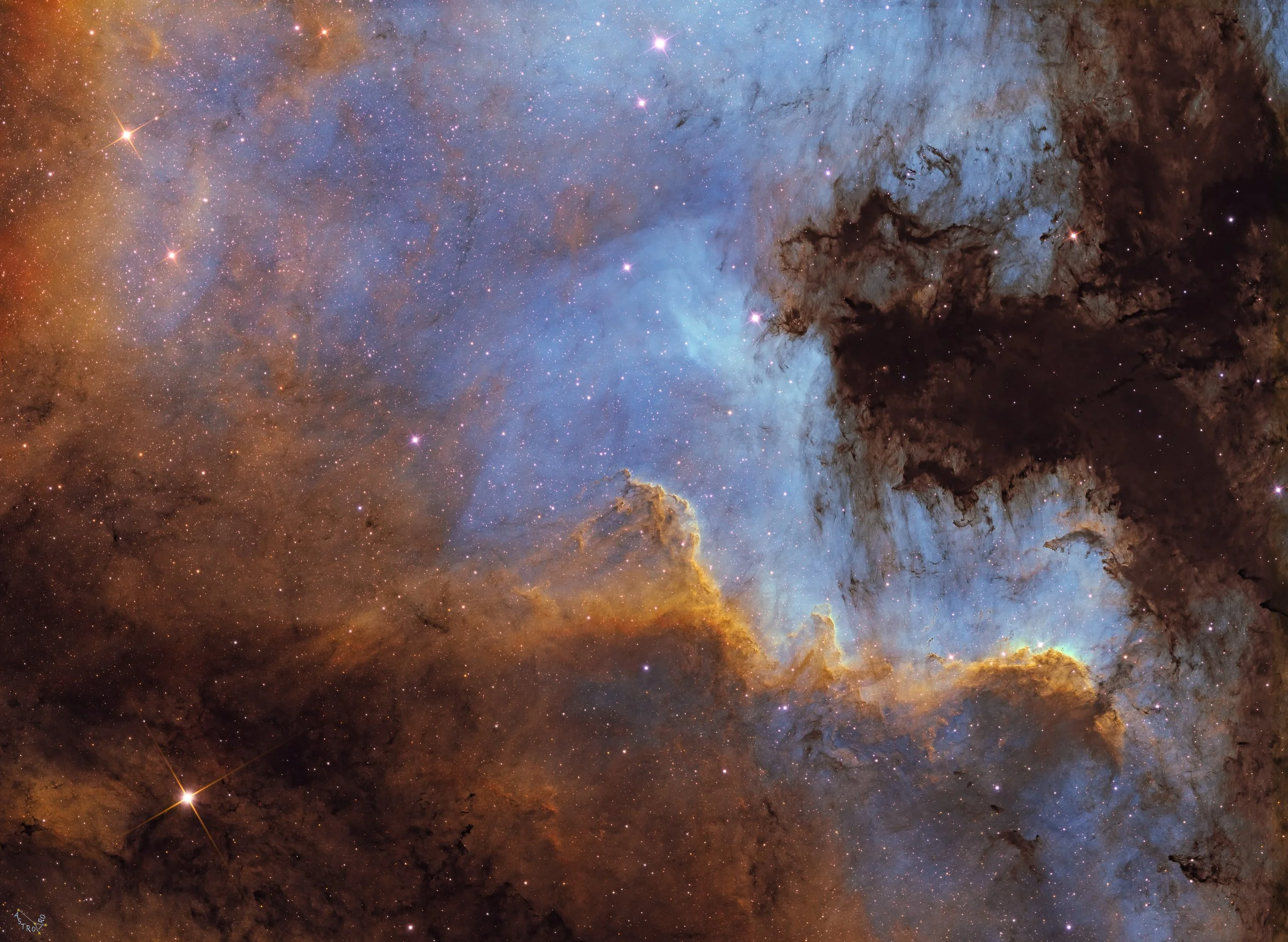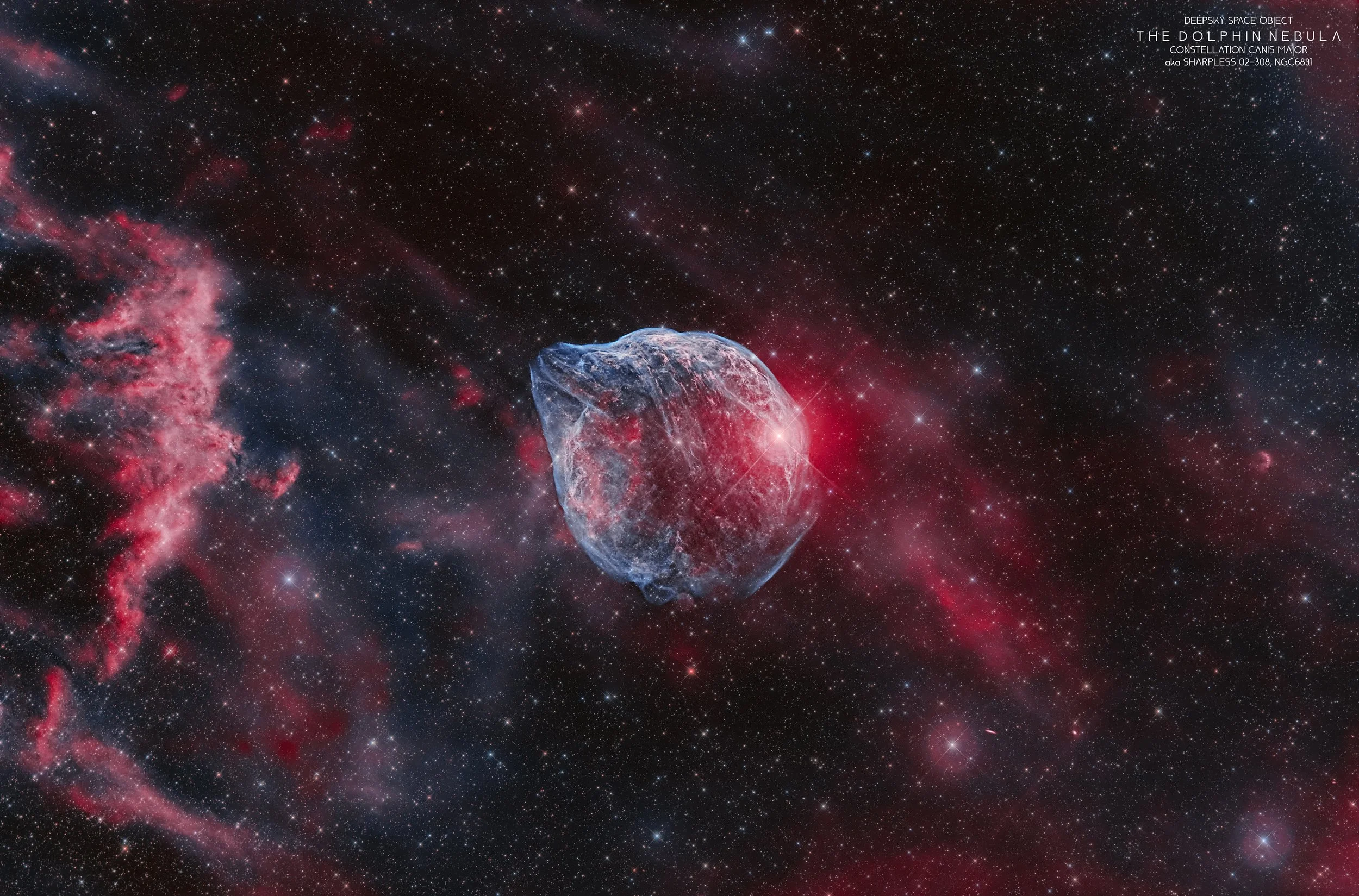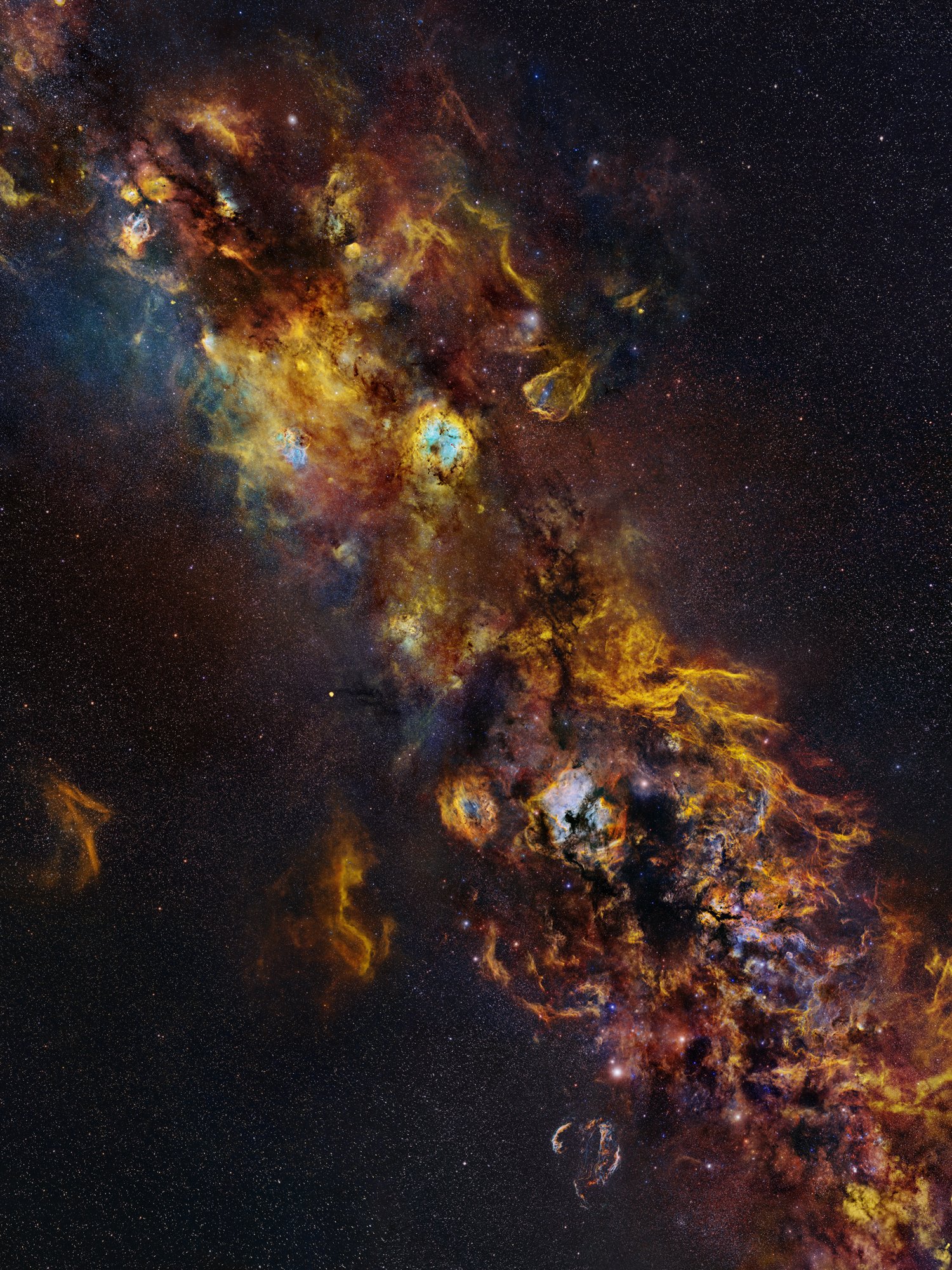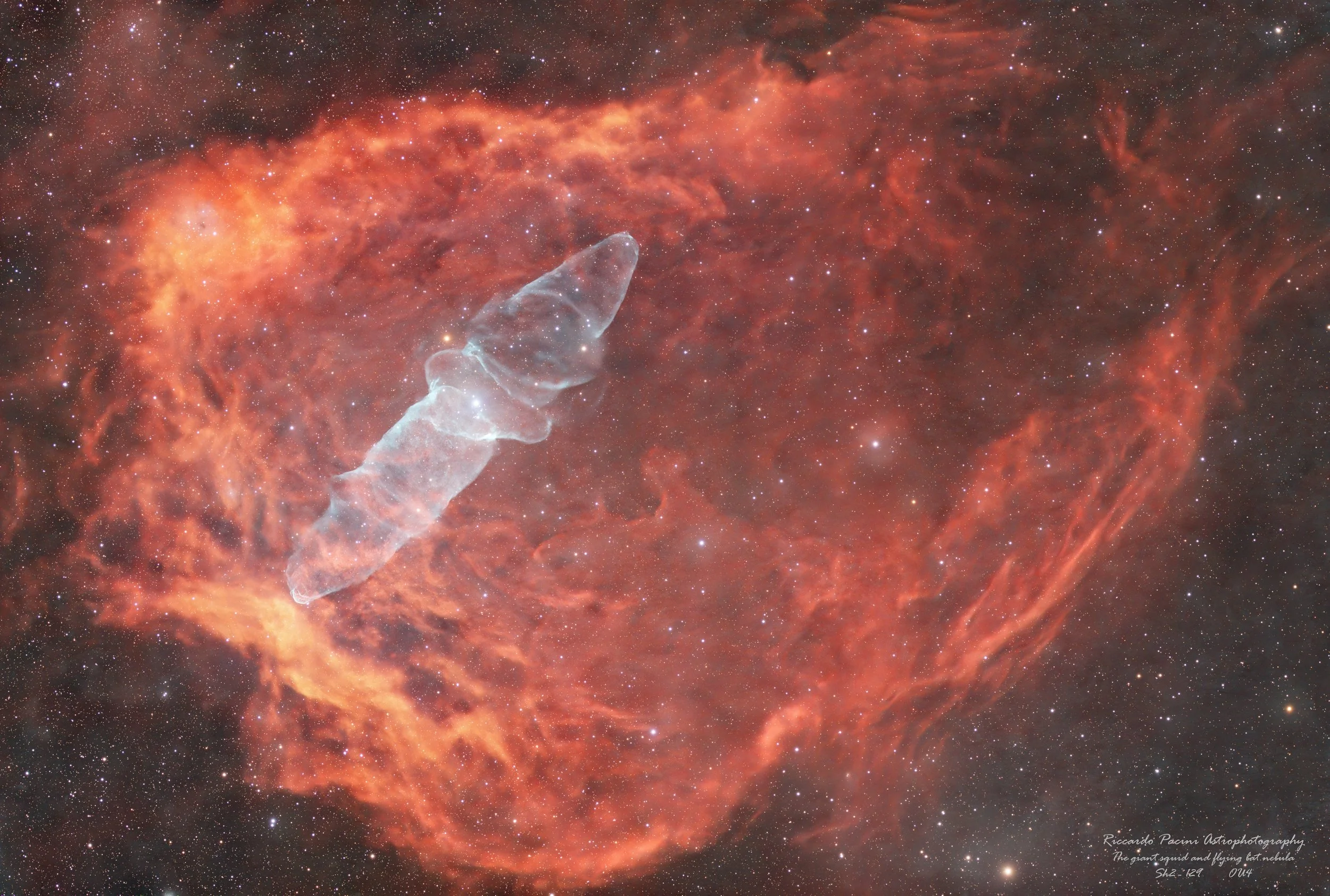
AAPOD2 Image Archives
August 2023
Monthly AAPOD2 Winners
The Cygnus Wall
In a remarkable celestial portrait, the Cygnus Wall unveiled its stunning grandeur within the North America Nebula (NGC 7000). This colossal structure, resembling a jagged and intricate wall of gas and dust, bore witness to the relentless forces of star formation and stellar winds. Energetic young stars nestled within this cosmic tapestry emitted intense radiation, sculpting the wall's mesmerizing contours and cavities. The Cygnus Wall served as an astronomical canvas, illustrating the awe-inspiring interplay between the luminous processes of star-birth and the cosmic architecture that emerges from these dynamic stellar interactions.
THE DOLPHIN NEBULA
In a captivating astronomical revelation, the Dolphin Nebula emerged as a radiant masterpiece against the backdrop of space. Located within the constellation Cassiopeia, this emission nebula's intricate tendrils of glowing hydrogen gas depicted a celestial aquatic scene reminiscent of a leaping dolphin. The intense radiation from nearby stars sculpted these ethereal formations, offering a mesmerizing testament to the profound interplay between stellar processes and the shaping of cosmic landscapes. The Dolphin Nebula stood as a poetic reminder of the artistry innate in the universe, weaving science and imagination into a single, breathtaking vision.
Thackeray's globules in IC 2944
The enigmatic Thackeray's Globules within the IC 2944 star-forming region were unveiled in remarkable detail in this astronomical image. These dense and dark interstellar clouds, shaped by the intricate dance of gravity and radiation, stood as cosmic incubators for new stars. As the vibrant emission nebula IC 2944 illuminated the surrounding space, the intricate contours of Thackeray's Globules came into focus, offering a unique glimpse into the ongoing process of star birth.
ISS Solar Transit
Description: Captured with extraordinary precision and timing, the image showcases the International Space Station (ISS) gracefully gliding across the blazing disk of the sun. Against the backdrop of the sun's fiery corona, the ISS appears as a delicate silhouette, a masterpiece of human engineering juxtaposed against the awe-inspiring forces of the universe.
W63 supernova remnant
In a striking astrophotograph, the W63 supernova remnant was unveiled in all its celestial splendor. This remnant stands as a testament to the cataclysmic end of a massive star. The structures of shockwaves and expanding debris showcased the forces unleashed during the supernova explosion, revealing insights into the dynamic processes shaping the cosmos.
With its intricate filaments and glimmering remnants, the W63 supernova remnant offered a glimpse into the intricate interplay between stellar life and death, underscoring the profound and ever-evolving nature of our universe.
The Unknown Whaler
In a remarkable capture taken near the Lighthouse of Pelican Point, an abandoned shipwreck took center stage against the backdrop of the remote landscape. However, it was the captivating beauty of the Milky Way that truly stole the show. With the celestial band of the Milky Way arching across the night sky, this cosmic display unveiled the intricate structure of our galaxy, a stunning tapestry of stars, dust, and gas. As the Milky Way's faint glow illuminated the shipwreck, the scene became a fusion of science and art, reminding us of our place in the vast cosmos and the profound connections between the universe and the stories of human history
M17 - The Omega nebula
M17, more famously known as the "Omega Nebula" or the "Swan Nebula," is a stunning emission nebula in the constellation Sagittarius, exhibiting intricate, swirling patterns resembling the graceful wings of a celestial swan.
This stellar nursery is a hotbed of ongoing star formation, with its colorful clouds of ionized gas and young, massive stars illuminating the surrounding space and drawing the fascination of both amateur and professional astronomers seeking to unravel the mysteries of stellar birth and evolution.
Cepheus and Cygnus
Cepheus, located in the northern hemisphere, boasts a remarkable emission nebula called the "Wizard Nebula" (NGC 7380), which exhibits a striking resemblance to a wizard casting a spell across the cosmos. Cygnus, also known as the "Swan," features the famous North America Nebula (NGC 7000), a vast cloud of gas and dust in the shape of the continent, captivating observers with its resemblance to the familiar shape of the North American continent.
Flying bat and giant squid
The Squid Nebula, also known as Ou4, is a unique and peculiar planetary nebula located in the constellation Serpens. Unlike typical planetary nebulae with round or elliptical shapes, the Squid Nebula showcases distinctive tentacle-like structures, making it a fascinating object of study for astronomers and a captivating sight for astrophotographers.
VdB 152 Capercaillie Nebula
Behold the mesmerizing beauty of VdB 152, the ethereal Capercaillie Nebula! This celestial masterpiece showcases an intricate dance of vivid colors and wispy tendrils, as newborn stars illuminate the surrounding cosmic canvas with their radiant brilliance, leaving stargazers awe-inspired and humbled by the wonders of the universe.
THE SUN FROM TEXAS
Solar photography is both art and science, capturing stunning images of the Sun, like in this wonderful example, allows photographers and astronomers to document solar phenomena such as sunspots, solar flares, and the ethereal beauty of nearest star.












